The 30 Best Plot Twists of the 21st Century, Ranked
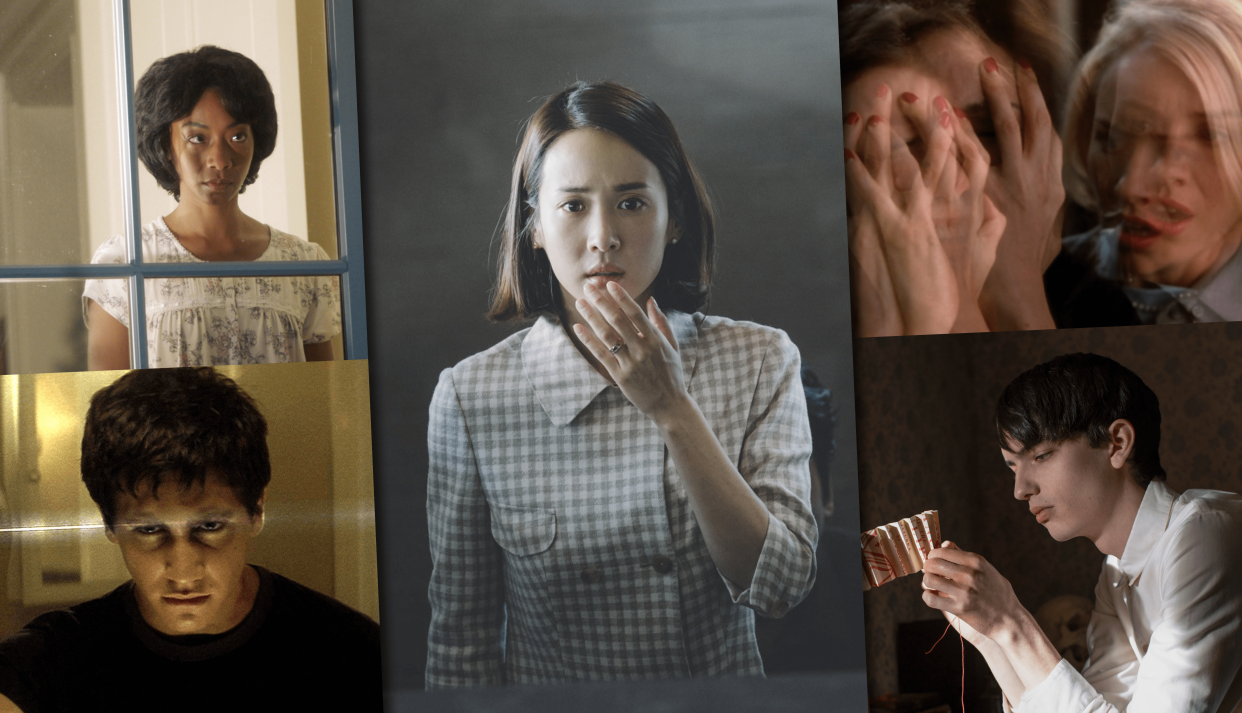
- Oops!Something went wrong.Please try again later.
- Oops!Something went wrong.Please try again later.
[Editor’s note: The below list has been updated with 30 entries on May 5, 2022 after originally being published with 20 on November 3, 2017.]
It’s the shock of seeing Norman Bates, knife in hand, clad in his mother’s clothes, grinning maniacally in the swinging lamplight. It’s a supposedly dead husband rising from a bathtub with terrifying saucer contact-lenses. It’s finally connecting “I see dead people” with Bruce Willis being shot at the beginning of “The Sixth Sense.” When movies pull the rug from under us, it’s one of the greatest thrills that cinema can provide.
More from IndieWire
'Roar' Co-Creator on Nicole Kidman Eating Photos, Meredith Wever Dating a Duck, and More -- Q&A
'Roar' Review: Apple's Spirited Episodic Anthology Is Rewarding All the Way Through
As Hollywood continues to reboot countless old properties, it’s easy to think that the days of original and surprising storytelling are long behind us. But these films prove that Hollywood still has a few tricks up its sleeve, ones that have kept us talking for years, and have cemented their place in film history.
Beware of spoilers! Here are the best plot twists of the 21st century.
Christian Blauvelt, Jude Dry, William Earl, David Ehrlich, Ryan Lattanzio, Jenna Marotta, Noel Murray, Chris O’Falt, Jamie Righetti, and Zack Sharf also contributed to this list.
30. “The Ring” (2002)
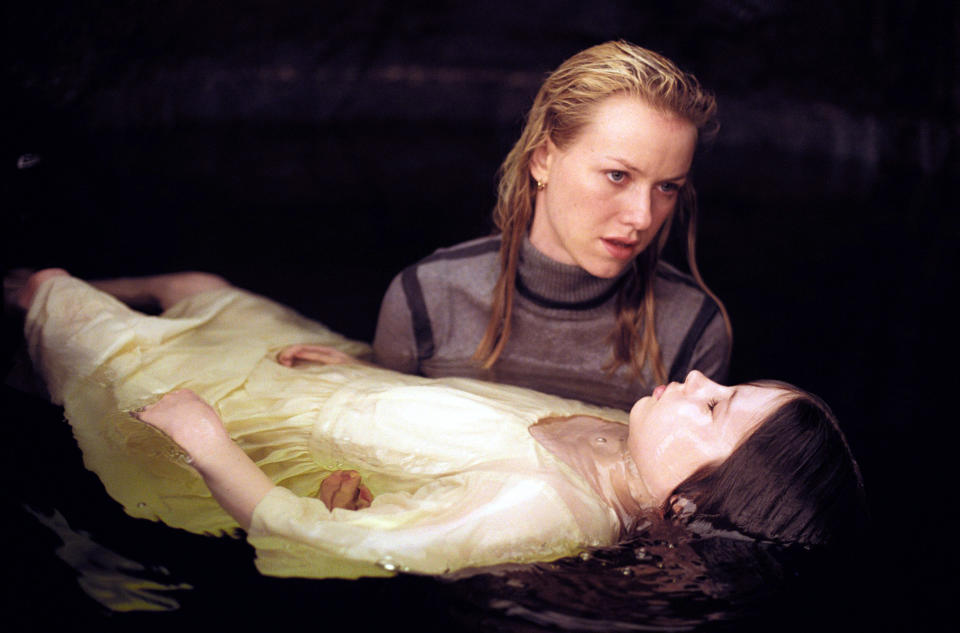
©DreamWorks/Courtesy Everett Collection
Just when you thought it was over… “The Ring” shocked American audiences with its left-field climax that, while lifted directly from the 1998 J-horror original, loses known of its power when refashioned by director Gore Verbinski. Rachel (a perfectly shivery post-“Mulholland Drive” Naomi Watts) thinks she’s put the curse of Samara to rest after freeing her purgatory-bound ghost from the bottom of a well, where Samara was tossed off as a little girl by her tormented mother. She thinks she’s cracked the mystery of the viral videotape that’s been killing teenagers and serving as Samara’s vehicle of vengeance upon the world. But she’s dead wrong because, as her all-too-sentient, cold-eyed child Aidan (David Dorfman) tells her, Samara never sleeps. The film frantically careens off course as it’s revealed Samara is most definitely not at all OK, and that her next victim is Rachel’s ex, video expert Noah (Martin Henderson), whom Rachel gave the tape in the film’s first act. In a scene most terrifying for its lack of musical overtures to instruct our emotions, Samara climbs out of Noah’s TV and does…whatever it is she does to her victims, which is scaring them to literal death. Rachel finally discovers the videotape’s true sinister force: The only way to rid yourself of the curse is to make a copy of the tape and pass it on to someone else. An alternate ending made available on the DVD release shows Rachel placing a copy of the tape on a video store shelf — though Verbinski and test audiences must’ve figured out we hardly needed an epilogue so literal to leave the theater completely rattled. —RL
29. “The Descent” (2005)
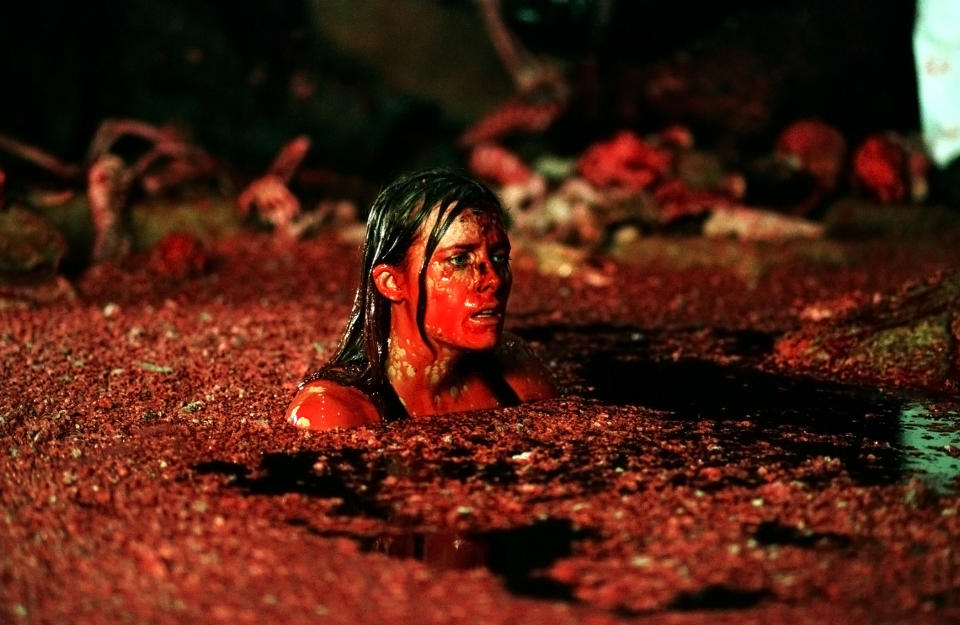
©Lions Gate/Courtesy Everett Collection
Six friends climb into a cave, but only one comes out. Neil Marshall’s survival horror film “The Descent” plays up the paranoia of being trapped in an underground maze while adding in slasher creature-feature elements thanks to a vampire-esque brood of hybrid humans dubbed Crawlers. The blind half-bat, half-man monsters feast on the female climbers, hunting them based on sound as food, water, and time run out. Yet “The Descent” may seem like a straightforward horror movie, but thanks to two different endings for the U.S. and U.K. releases, the film has a separate surprise twist. In the original ending, which was released only in the U.K., the sole survivor Sarah (Shauna Macdonald) actually has lost her mind: the vision of her dead frenemy Juno (Natalie Mendoza) snaps her back into the reality of still being trapped in the cave as the Crawlers creep closer. Apparently, U.S. test audiences found the original ending too bleak, so Marshall compromised with Sarah escaping but still being haunted by her murdered friends. —SB
28. “Ex Machina” (2015)
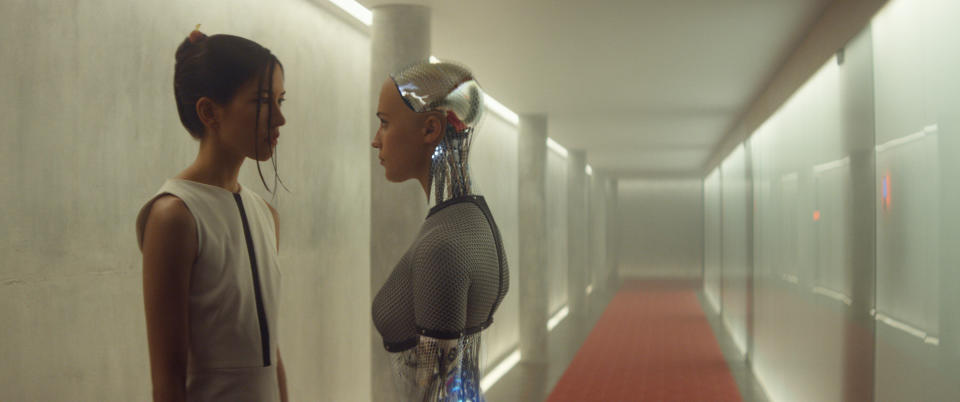
Courtesy Everett Collection
As progress continues to be made in the field of artificial intelligence, “Ex Machina” paints a chilling portrait of an AI blatantly outsmarting two humans. The bulk of the film is centered around eccentric tech mogul Nathan Bateman’s attempts to convince programmer Caleb Smith that his AI creation, Ava, is truly conscious. Through many clandestine conversations, Caleb falls in love with Ava and wants to help her escape from Nathan. The film culminates with the revelation that everyone in the film was trying to deceive someone else. Nathan thought he was playing Caleb, tricking him into falling in love with Ava as a way of convincing her she’s human. Caleb thought he was playing Nathan, helping Ava escape from an abusive master. But in reality, Ava was playing everyone. After getting what she needed to escape from Caleb, she locks him in a surveillance room to die and boards the helicopter intended for him, seamlessly assimilating into human society. —CZ
27. “Us” (2019)
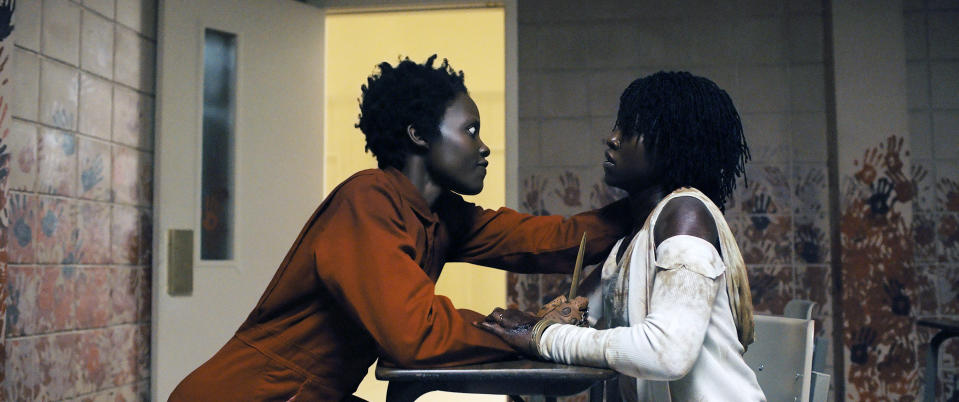
©Universal/courtesy Everett / Everett Collection
Jordan Peele’s “Us” was unsettling from the start: A woman (Lupita Nyong’o) returns to her childhood home and tells her husband (Winston Duke) about an unsettling memory at the Santa Cruz boardwalk where she met her doppelganger after getting lost in a house of mirrors. But decades later and that adult doppelganger is now back with a vengeance — along with the identical counterparts of her whole family, plus friends, played by Elisabeth Moss and Tim Heidecker. And these doubles are monster-like, growling, barely able to talk, and intent on murdering their above-ground twins. The ending throws the whole film into a spiral as it turns out the little girl who encountered her doppelganger was swapped out, trapped in a government facility underground, and is now the “other” who is leading the revolt. The manufactured “tethered” version replaced the real little girl all those years ago. —SB
26. “High Tension” (2003)
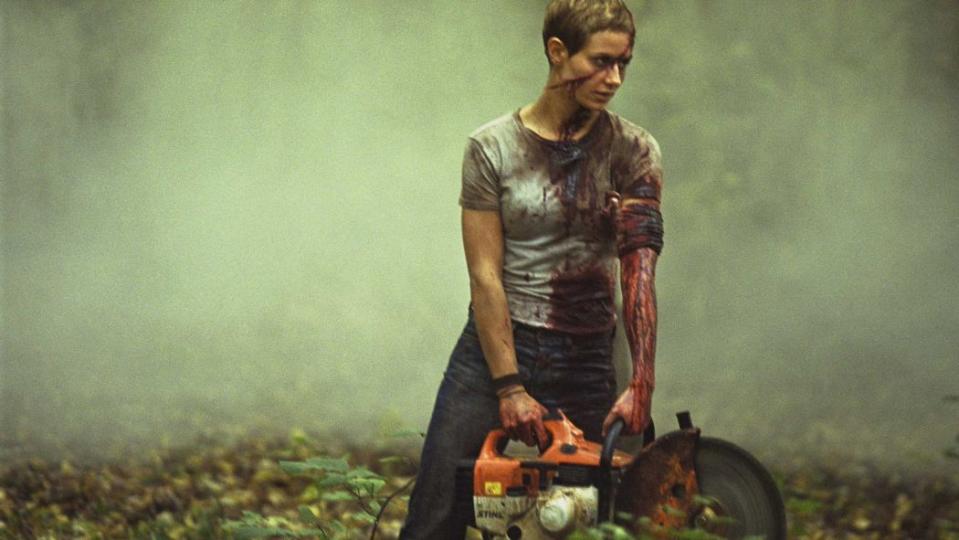
Alexander Aja’s New French Extremity offering starts out innocuously enough, with two college best friends, Alexia and Marie, getting away to the country to study for final exams. But there’s a serial killer on the loose, and in the middle of the night, Alexia is taken hostage by the man after her entire family is brutally slaughtered. Marie manages to outsmart the killer (both at the family home and in an especially taut cat-and-mouse gas station bathroom scene), and pursues him with the intent to save her friend. Over the course of the film, Marie becomes an incredibly badass Final Girl…until it’s revealed that she’s been the killer the entire time. Marie’s attraction to Alexia has split her personality in two: One a sadistic and ruthless killer, and the other, Marie’s heroic savior who won’t let anyone come between them again. Of course, this twist throws a lot of earlier scenes into contention — namely the shocking scene of The Killer defiling and callously disposing of a severed head — but it’s still an abrupt and delicious plot twist that has left people talking all these years later. —JR
25. “Cache” (2005)
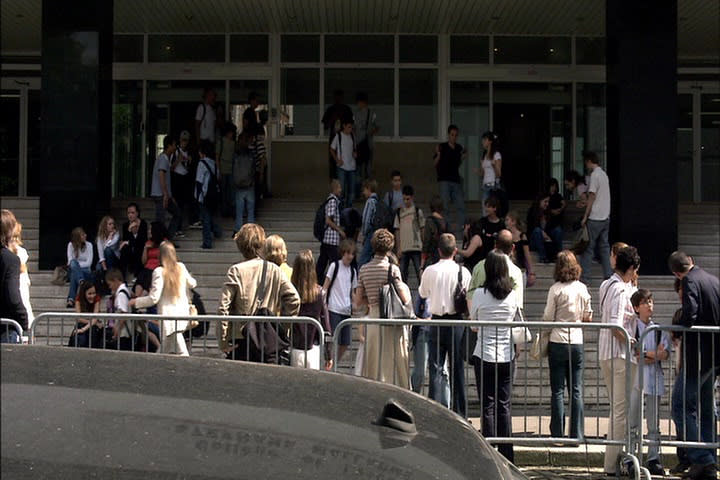
Part eerie surveillance thriller, part insinuating allegory of France’s national guilt over its widespread massacre of Algerians, Michael Haneke’s “Caché” begins with an opening straight out of David Lynch’s “Lost Highway”: A bourgeois couple receives a videotape of their home without apparent motive. From there, affluent marrieds Georges (Daniel Auteuil) and Anna (Juliette Binoche) continue to receive similarly menacing surveillance footage of their Parisian flat that increasingly seems to target Georges’ primal shame: As a kid, he tormented Majid, the young Algerian boy who lived on his family’s estate after Majid’s parents went missing amid the war. The missives, meanwhile, become more pointed as the tapes reveal darker implications about Georges’ relationship with Majid, who’s still alive somewhere in Paris. Through a typically Haneke-esque, surgically staged confrontation that results in Majid slitting his own throat on camera, it seems the mystery is solved, and that Majid had possibly dispatched his son to give Georges and Anna (Binoche) the tapes. But the film takes a brilliant final swerve as, in its last shot, Majid’s son and Georges’ son Pierrot (already willful and rebellious) are seen in conversation on the steps of Pierrot’s school. We don’t hear the exchange, but the implication casts the entire movie in a chilling new hue. Did Majid and his son implicate Pierrot in their plot? Was Pierrot out to rupture his parents’ disaffected bourgeois front? Was there even a grand plan at all? Haneke never answers these uneasy questions, making for a puzzle that can’t be solved but is worth endlessly sifting over. —RL
24. “Donnie Darko” (2001)

"Donnie Darko"
If you went to high school in the 2000s, there was no better litmus test than “Donnie Darko” to weed out the duds from the interesting people. The film announced Jake Gyllenhaal as a serious actor, though not one devoid of boyish charms (however dark). His signature puppy dog eyes turn cold in his portrayal of troubled youth Donnie, who hallucinates a life-sized rabbit named “Frank,” who tells him the world is going to end in exactly 28 days. The doctors think he’s schizophrenic, but Donnie is more concerned with time travel after a teach gives him “The Philosophy of Time Travel” to read. There are clues throughout to the movie’s mind-bending denouement, making it endless fun to re-visit. —JD
23. “Eternal Sunshine of the Spotless Mind” (2004)
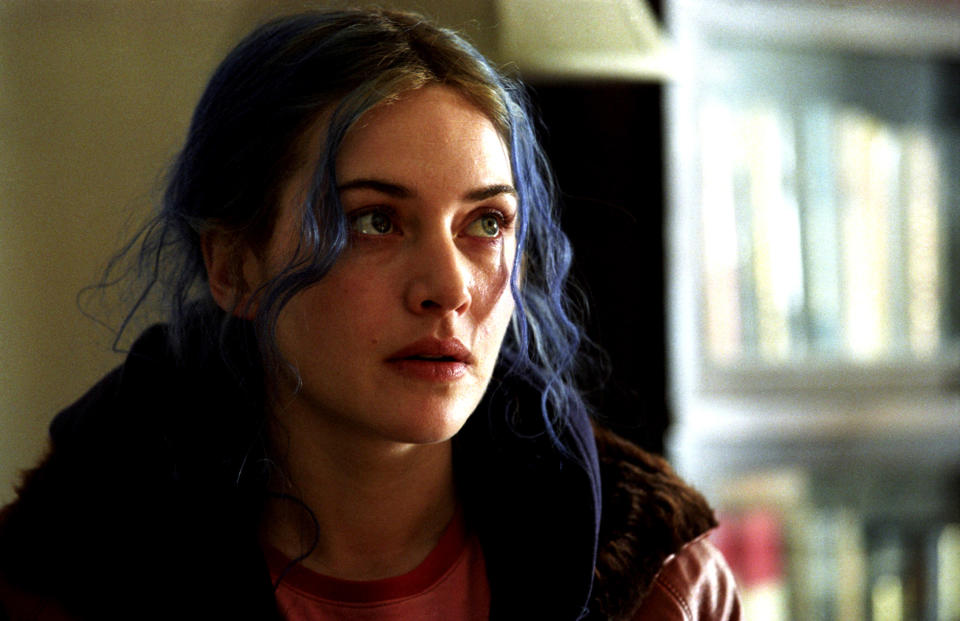
©Focus Films/Courtesy Everett Collection
After watching the infectious chemistry and infuriating friction between Joel (Jim Carrey) and Clementine (Kate Winslet), viewers are essentially left at the beginning. The film ends with the couple who was so incompatible that they paid to have their memories of each other erased (on multiple occasions!) choosing to give it yet another go. They know full well that their romance is likely to end the way the last one did, but life is short and the high is worth the pain. While the ending essentially renders the emotional roller coaster of the film meaningless, it works as a stunning tribute to life’s many beautiful contradictions. The brilliance of the ending is that it turns a movie about the pain of forgetting mistakes into one about the joy of making them. —CZ
22. “Goodnight Mommy” (2014)
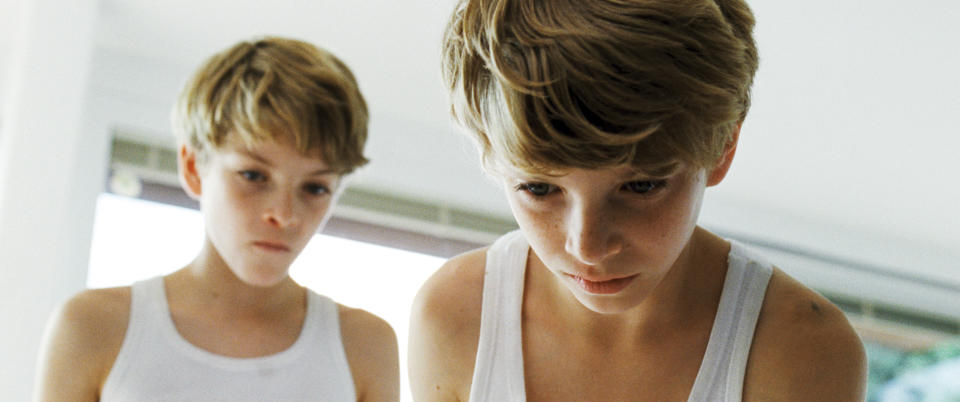
Everett Collection / Everett Collection
The “Surprise! That character has been dead all along!” twist has become something of a cliché in the years since “The Sixth Sense,” so kudos to the writer-director team of Veronika Franz and Severin Fiala for finding a way to disguise it cleverly, catching the audience off-guard in their psychological thriller “Goodnight Mommy.” For most of the movie’s running time, viewers are urged to keep an eye on the title character (played by Susanne Wuest), who recently returned from the hospital with a bandaged face and — according to her twin sons Elias and Lukas (Elias and Lukas Schwarz) — a new personality. The boys are sure she’s an impostor, yet when they torment their maybe-mother to the breaking point, she admits what in retrospect was hidden in plain sight all along: that the Lukas with whom Elias has been confiding and conspiring is actually a figment of his imagination, since his actual brother died. The revelation changes the whole nature of Elias’s accusations against his mom, giving an already-creepy horror film some tragic overtones. —NM
21. “The Invitation” (2015)
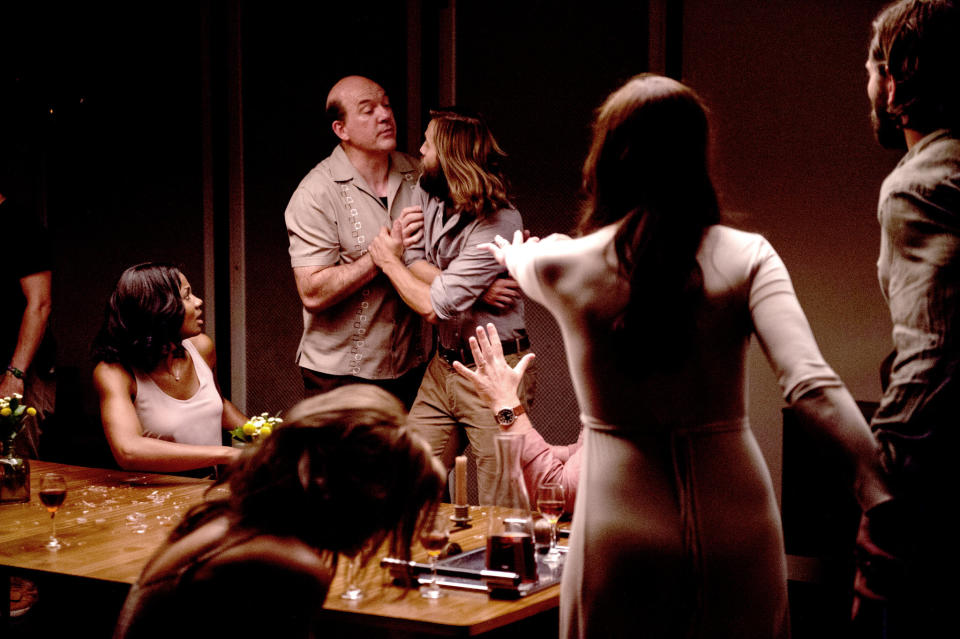
There are actually two big twists in “The Invitation.” One creeps up slowly throughout the film; the other arrives at the end like a knockout punch. Director Karyn Kusama and screenwriters Phil Hay and Matt Manfredi frame their picture as a darkly comic suspense story, rooted in a dread of awkward social interactions. Logan Marshall-Green plays Will, a grieving father who reluctantly agrees to attend a Hollywood Hills dinner party, hosted by his ex-wife (Tammy Blanchard). As the night wears on, Will realizes that the excruciating New Age trust-games the guests are being forced to play are actually part of a death cult’s murder-suicide ritual. That’s surprising enough — especially when Will is eventually proved right. But the real shock comes in the movie’s closing minutes, when the party’s survivors look around the canyons and valleys of Los Angeles and see the cult’s telltale red lanterns everywhere, indicating that what happened at that one party is happening across the city. They may have staved off the madness momentarily, but they’re stuck in a town where even mass homicide becomes trendy. —NM
Best of IndieWire
New Movies: Release Calendar for May 6, Plus Where to Watch the Latest Films
Best Movies Never Made: 35 Lost Projects from Christopher Nolan, Quentin Tarantino, and More
Sign up for Indiewire's Newsletter. For the latest news, follow us on Facebook, Twitter, and Instagram.
